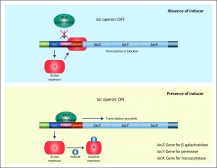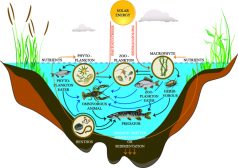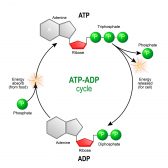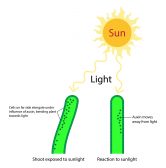Table of Contents
Definition
noun
plural: deoxycytidine triphosphates
(biochemistry) A nucleotide composed of cytosine, deoxyribose and three phosphate units, with a chemical formula: C9H16N3O13P3
Details
Overview
A nucleotide is an organic compound made up of three subunits: a nucleobase, a five-carbon sugar, and a phosphate group. The sugar component may either be ribose or deoxyribose. The ribose is the sugar component of the nucleotides that make up RNA. The deoxyribose is the sugar component of DNA. Nucleotides are the monomeric units of nucleic acids. Each phosphate group connects the sugar rings of two adjacent nucleotide monomers. The phosphate groups and the sugar moieties form the backbone of a nucleic acid. The directionality of the chain runs from 5′-end to 3′-end. In DNA, the orientation of the two strands is in opposite directions. This is to allow complementary base pairing between nucleobase constituents. A nucleotide is, thus, a nucleoside with a phosphate group. Depending on the number of phosphate groups attached to the sugar moiety. It may be called nucleoside monophosphate (if with only one phosphate group), nucleoside diphosphate (with two phosphate groups), or nucleoside triphosphate (when with three phosphate groups). Depending on the pentose sugar component, a nucleoside may be a ribonucleoside or a deoxyribonucleoside. A ribonucleoside is a nucleoside with a ribose sugar component. (Depending on the nucleobase component, the ribonucleoside may be adenosine, guanosine, cytidine, uridine, or 5-methyluridine). A deoxyribonucleoside is a nucleoside with a deoxyribose sugar. Depending on the nucleobase component, a deoxyribonucleoside may be deoxyadenosine, deoxyguanosine, deoxycytidine, thymidine, or deoxyuridine. Also, depending on the nucleobase component, the nucleosides may be grouped into either the “double-ringed” purine or the “single-ringed” pyrimidine.
Deoxycytidine triphosphate is a pyrimidine nucleotide composed of cytosine, deoxyribose and three phosphate units, with a chemical formula: C9H16N3O13P3
Characteristics
Deoxycytidine triphosphate (dCTP) is a nucleoside phosphate in being comprised of a deoxyribonucleoside and three phosphate units. This means that it has a deoxyribose as its sugar constituent with three phosphate units attached. Its nucleoside contains a pyrimidine base, i.e. a cytosine attached to the deoxyribose sugar.
dCTP vs CTP
Cytidine triphosphate (CTP) is a nucleotide composed of cytosine, ribose and three phosphate units. It has a chemical formula of C9H16N3O14P3. It differs from dCTP in terms of the sugar component. dCTP, instead of having a hydroxyl group on the 2′ carbon on the on pentose sugar as it is in CTP, has it reduced to a hydrogen atom (thus, deoxy- in its name).
Biological functions
dCTP is one of the monomeric nucleotides that make up DNA. The others are deoxyguanosine triphosphate (dGTP), deoxyadenosine triphosphate (dATP), and (deoxy)thymidine triphosphate (dTTP). In DNA, dCTP complementary base pairs with dGTP. dCTP is also a metabolite that has been observed in the following biological processes: pyrimidine metabolism, dihydropyrimidinase deficiency, UMP synthase deficiency, beta ureidopropionase deficiency, and mitochondrial neurogastrointestinal encephalopathy.1
Supplementary
Abbreviation(s)
- dCTP
IUPAC name
Chemical formula
- C9H16N3O13P3
Synonyms
Further reading
See also
- nucleotide
- DNA
- cytidine
- cytidine monophosphate (CMP)
- deoxycytidine monophosphate (dCMP)
- deoxycytidine diphosphate (dCDP)
Reference
- Human Metabolome Database: Showing metabocard for dCTP (HMDB0000998). (2019). Retrieved May 20, 2019, from Hmdb.ca website: ://www.hmdb.ca/metabolites/HMDB0000998 Link
© Biology Online. Content provided and moderated by Biology Online Editors







